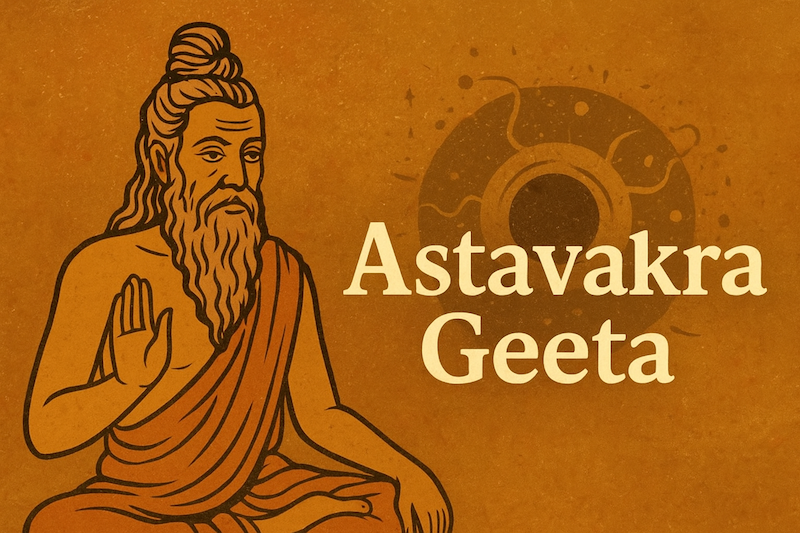Introduction
When we think of India’s spiritual heritage, texts like the Bhagavad Gita, Upanishads, and Yoga Sutras often come to mind. Yet, hidden within the vast ocean of wisdom is another jewel—the Astavakra Geeta. Unlike many scriptures that blend philosophy with rituals or duties, the Astavakra Geeta is a pure, unfiltered conversation on truth, consciousness, and freedom.
This dialogue between Sage Astavakra and King Janaka goes straight to the heart of non-duality, cutting through illusions to reveal the essence of the Self. It is raw, uncompromising, and deeply liberating.
Who Was Astavakra?
The name Astavakra literally means “eight bends.” According to legend, Astavakra was born physically deformed in eight places, but his wisdom and clarity were unmatched. Despite his body’s limitations, his mind was boundless. His very presence challenged the common belief that outer form defines inner greatness.
Astavakra symbolizes the truth that the Self is beyond body and mind.
The Setting: King Janaka’s Quest
King Janaka, known as one of the wisest rulers in Indian history, sought liberation. He turned to Astavakra, asking the deepest question of all:
“How can one be free?”
This simple yet profound question sparked a dialogue that became the Astavakra Geeta—a scripture focused entirely on the direct experience of truth.
The Core Message
Unlike other texts that guide through paths of devotion, duty, or meditation, the Astavakra Geeta emphasizes:
- You are already free. Liberation is not something to be achieved but recognized.
- Detach from the unreal. The body, mind, and world are fleeting. The Self is eternal.
- Silence and awareness are the highest practices. Instead of rituals, the Geeta points directly to inner stillness.
It’s radical in its approach. While most spiritual texts encourage effort, Astavakra declares, “You are the Self, pure awareness. You were never bound.”
Why It’s Relevant Today
In our busy modern lives, filled with stress, comparisons, and constant distractions, the Astavakra Geeta feels revolutionary. It tells us that peace isn’t something to run after—it’s our very nature. By letting go of identification with thoughts and roles, we discover freedom here and now.
It’s philosophy without complication—direct, sharp, and transformative.
Final Thoughts
The Astavakra Geeta may not be as widely discussed as the Bhagavad Gita, but its power is undeniable. It strips away all spiritual “noise” and points us to the truth of who we are.
This is just the beginning of our series. In the next post, we’ll explore the key teachings of Astavakra Geeta in simple terms, so you can apply them to your everyday life.
Stay tuned—because the wisdom of Astavakra has the potential to reshape how you see yourself and the world.
